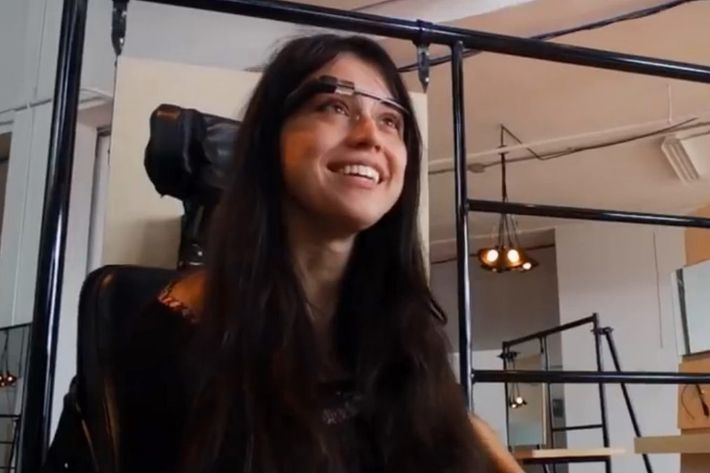
For several years, the computerized spectacles known as Google Glass have been available only to an exclusive, handpicked group through Google’s invitation-only “Explorer” program. Now, the barrier to entry is dropping: For just one day, Google is opening up the Explorer program to all. Now, you too can buy your very own pair of $1,500 nerd goggles.
But first, a word of warning: As gadget rollouts go, Google Glass’s public debut has fallen on the disaster index somewhere between New Coke and the Hindenburg. Only 30,000 people in the world own Glass, but it’s already become the most polarizing gadget in modern history. Here are seven reasons you might want to think twice before ponying up $1,500 to join the Glass brigade:
1. It’s a symbol of class division. Business Insider reporter Kyle Russell wrote last week about how his Google Glass were stolen off his face, and smashed into pieces on the ground, by a mugger in San Francisco’s Mission District. Russell was somewhat understanding about the incident — writing that “anything associated with Google has come to represent gentrification in the city,” and acknowledging that he should have taken off his Glass before walking down the streets of the Mission — but it still couldn’t have been fun.
2. Traffic laws aren’t established yet. Glass Explorer Cecilia Abadie was pulled over last year by the California Highway Patrol for wearing her Glass while driving. The ticket was subsequently thrown out in court, because it couldn’t be proven that Abadie’s Glass was in use while she was behind the wheel. But laws about using Glass in the driver’s seat vary by jurisdiction, and at least eight states are considering new regulations. Even if DWG is legal in your state, you probably should avoid it and save yourself the potential hassle.

3. Your favorite bar, pet store, or strip club might ban you. Among the establishments that have banned Google Glass on the grounds that they wish to maintain their customers’ privacy (and because the owners think Glass is creepy) are San Francisco’s Acquerello and the Animal House, Seattle’s 5 Point Cafe, and Las Vegas’s Sapphire Gentlemen’s Club. If you regularly patronize any of these places of business, you’ll have to go elsewhere to enjoy your Glass-augmented surroundings.
4. The Feds might think you’re a movie pirate. Unlike bars or restaurants, whose reasons for banning Google Glass are more aesthetic than legal, movie theaters have ostensible business reasons to kick your ass out for wearing Glass. (You could be recording the screen and making bootleg copies, after all.) Federal authorities questioned an Ohio man who wore his Glass to a showing of Jack Ryan: Shadow Recruit, and released him only once they’d been unable to prove his device was turned off during the movie.
5. The apps are mediocre. One of the selling points of Google Glass, when it was first released to beta testers, was that developers would soon be building all kinds of amazing apps for Glass. So far, though, the offerings have been less than impressive. This comprehensive list of Glass apps includes apps that allow you to check on Bitcoin’s price, see a scrolling ticket of WhatsApp messages, and play blackjack. Glass’s built-in apps — Google Maps, Google Now, and support for calls and text messages when paired with an Android phone — are more appealing, but the promised wave of third-party awesomeness hasn’t exactly materialized yet. (And no, the sex app doesn’t count as a milestone.)
6. You’ll become a walking spectacle. When I attended a meetup of Glass Explorers at this year’s SXSW Interactive, one of the main things I learned was that wearing Glass is tantamount to being a human in-store demo. The Explorers talked about how, during the course of an average day, dozens of people approach them, wanting to ask questions about Glass, try on their pair, and otherwise make a big deal of their special status. That’s fine if you’re an extrovert, but, for most people, it would become annoying after about the 50th day of nonstop interactions with puzzled strangers, asking to borrow the computer on your face for an Instagram selfie.

7. You’ll have to navigate a social minefield. It’s not just adoring strangers who will stop you while wearing a pair of Glass. As the tech industry backlash has grown, wearing a $1,500 face computer has become a version of taking sides. Given the privacy concerns Americans have about Glass, awkward interactions are commonplace among early Glass adopters. Google has published a manual of Glass etiquette — which should tell you something, both about the technology itself and the psychological profile of the average Explorer — but you’ll still have to answer questions like “Do I take off my Glass when headed into a public bathroom?” Every day becomes exponentially more complicated when you’re a Glasshole, with thousands of micro-decisions about how to avoid pissing people off with your ostentatious headgear.
In short, it’s going to take a few more iterations (and a better design) for Google Glass to become the kind of device that normal people can wear without feeling like silly cyborgs. Wearable computing in general is still suffering from a lack of aesthetic sensibility, and Glass represents the ultimate in function over form. And for now, the main benefits to be had from it are functional — for surgeons who want to access medical records while in the OR, for example — and it’s true that Glass is opening the door for others kinds of wearable computing experiments.
But there is one other benefit to getting Google Glass now: By wearing it, you’ll likely be increasing the average social aptitude of the Glass user by a smidgen. And if enough people adopt it, it won’t look so weird anymore. Like Macklemore haircuts or Pharrell hats, there’s strength in numbers.





























